Text
Social Media and the Future of Communication.
Looking at the development of web 1.0 to web 2.0 to the current web 3.0, we see how far the development of online communication has come. When reflecting on how quickly social media has developed over the last 15 years, we have an indication of where social media will be in years to come.
We can use dating apps as an example of how social media has impacted the future of communication. People rarely have the time to meet new people to form romantic relationships, so dating apps have changed the game for many singles looking for love. Finkel suggests that dating apps "offers unprecedented (and remarkably convenient) levels of access to potential partners, which is especially helpful for singles who might otherwise lack such access". (Finkel et al., 2012).
Our communication with potential love interests has already changed and continues to change with the use of social media and dating apps; their convenience allows users to conclude an encounter without any awkwardness or uncomfortably that you could experience in a face-to-face encounter. Eharmoney has suggested that "by the year 2040, 70% of relationships will be able to attribute their coming-together to online dating or online communication" (Eharmony, 2014).
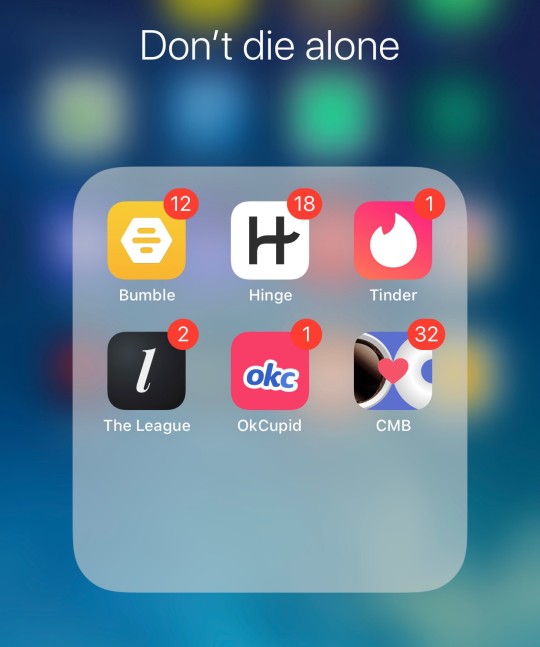
(Image taken from: https://psiloveyou.xyz/bad-line-ideas-for-my-dating-app-bios-23e72ea575bd)
We can also use the rising popularity of explicit content on social media to indicate how we will communicate in the future. For example, the site OnlyFans has gained tremendous popularity in the last two years. The idea of allowing content creators to interact with their fans personally and not have their content regulated like most other social media platforms has filled a market gap. Jenna Sauers explains that "with its structural similarities to social media, OnlyFans quickly proved a hit: The site draws on influencer culture as much as it does the adult world, a dual identity that set it apart from your average camming site." (Sauers, 2021). On traditional social media, content is regulated, and pictures/videos that are explicit even without nudity are typically removed. Instagram recently went on a cleansing of user-profiles deemed too explicit for the site. For example, sex worker Riley Reid had her Instagram account (@titsoutkickedout) permanently deleted at the start of January 2021 due to her raunchy content. She has since created a new account (@letrileylive), suffering the loss of many followers and therefore suffering a loss of income. The popularity of sites like OnlyFans allows influencers to post the content that they wish, gain monetary revenue for the content and create a more personal connection with there fans. The future of social media communication will be much less restrictive, and sites like Instagram and Youtube will lose popularity due to the censorship they enforce on the influencers on their partner programs.
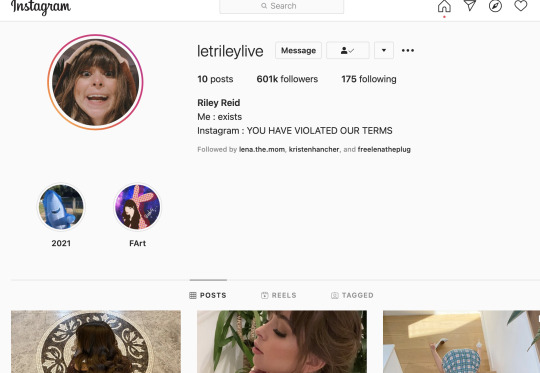
(Image: Riley Reid instagram profile : https://www.instagram.com/letrileylive/)
Sites like Youtube are stringent on any content they deem unsuitable for all, leading many Youtubers apart from their paid-partnership program struggling to generate income. This is where influencers take on sponsorships from external companies to generate income or move to other platforms (twitch, OnlyFans, Patreon) to receive paid subscriptions or donations from fans.
Ultimately it seems that the future of communication in social media is heading to a more accessible and unrestrictive path, and prominent social media companies will have to follow if they wish to stay on top.
References:
Eli J. Finkel et al. (2012) Online Dating: A Critical Analysis From the Perspective of Psychological Science. Psychological science in the public interest. [Online] 13 (1), 3–66.
Eharmony (2014). Over 50% of couples will meet online by 2031 - eharmony. eharmony Dating Advice Site. [online] 24 Jan Available at: https://www.eharmony.co.uk/dating-advice/online-dating-unplugged/over-50-of-couples-will-meet-online-by-2031.
Sauers, J. (2021) 'The Future Is OnlyFans', GQ - Gentlemen's Quarterly, 91(2), 100, available: https://link.gale.com/apps/doc/A652756958/ITOF?u=anglia_itw&sid=ITOF&xid=78205c06 [accessed 14 Mar 2021].
Muska, S. (2019). Bad Line Ideas for My Dating App Bios. [online] Medium. Available at: https://psiloveyou.xyz/bad-line-ideas-for-my-dating-app-bios-23e72ea575bd [Accessed 14 Mar. 2021].
Reid, R. (2021). Login • Instagram. [online] www.instagram.com. Available at: https://www.instagram.com/letrileylive/ [Accessed 14 Mar. 2021].
#social media#communication#future#instagram#youtube#youtubers#advertisements#subscriptions#onlyfans#riley reid#dating#eharmony#love#online#relationship#companies#sponsored#sponsership
0 notes
Text
Smartphones and their Impact on Language and Literacy.
While smartphones give us countless affordances and enrich our daily lives, many are concerned with what impact smartphones have on our language and literacy skills.
Smartphones use technologies that do not require the users to type out their requests or controls anymore. For example, the development of Siri on Apple iPhones allow users to send text messages without typing using speech-to-text technologies. When the general public first used mobile phones as a primary form of communication, teachers believed it was 'text talk' and 'textism' that threatened the English language. Tagg highlights this by stating how "A moral panic is said to occur when widespread fears of a somewhat abstract and vague threat to the social order are expressed in reactions against something more specific and concrete - drug use, vicious dogs, teachers' perceived inadequacies, digitalese - where the specific case in fact represents wider social issues' (Tagg, 2015, p.24).
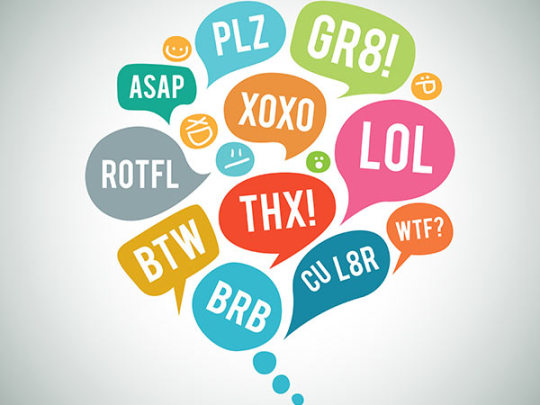
(Image taken from: https://www.gizbot.com/internet/features/text-speak-oldest-things-in-the-internet-world/articlecontent-pf74879-041025.html)
While it is common to assume that today's youth are incapable of reading and writing English to the standard upheld in prior years due to the creation and popularity of textism, this is not factually true. Studies reflect how children are perfectly capable of recognising the difference between digitalese and standard English language, "findings suggest that children's knowledge of textisms is not associated with poor written language outcomes for children in this age range." (Plester et al. 2008). It can be argued that today's youth are more competent than before when it comes to language and literacy as they usually spend their free time in online spaces that generate new terminology and language. Younger people (Millenials and Gen Z) are creating new terms and words while also maintaining their standard English level, which is far more than previous generations were doing. It is often felt like teenagers today speak a different language due to the amount of new terminology and slang that is being developed, primarily through smartphones. People are not misspelling words while texting or messaging, but instead, they are respelling for efficiency and are aware of the difference.
People today can communicate far more effectively than ever before, thanks to smartphones. What started as text talk and digitalese has now developed into emojis, gifs and memes. People do not have to use words to communicate anymore; it can be done through symbols and pictures. The complexity of the use of emojis is fascinating. As Eric Goldman states, "An emoji symbol might be used for different functions in the same message; or different emoji symbols might perform the same function in a single message." (Goldman, 2018.)
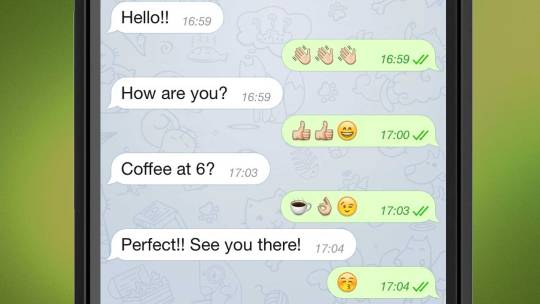
(Image by Alejandro Migueles Osuna. Taken from: https://netivist.org/debate/emoji-text-messages)
People are also reading and writing a lot more than they did before smartphones and technological developments. Thanks to web 3.0, we can now comment our views and opinions on the media we consume, for example, leaving reviews on apps, comments on YouTube videos, posting on someone's Facebook timeline.
Ultimately, smartphones have had an overwhelmingly positive impact on language and literacy. While we perhaps do not physically type as much as we did a few years ago due to smartphones' technological advancement, the impact is still positive.
References:
Caroline Tagg (2015) Exploring Digital Communication: Language in Action. [Online]. Taylor and Francis.
Plester, B. et al. (2008) Txt msg n school literacy: does texting and knowledge of text abbreviations adversely affect children's literacy attainment? Literacy (Oxford, England). [Online] 42 (3), 137–144.
Goldman, E. (2018) 'EMOJIS AND THE LAW', Washington Law Review, 93(3), 1227+, available: https://link.gale.com/apps/doc/A563358928/AONE?u=anglia_itw&sid=AONE&xid=5488a7b7 [accessed 14 Mar 2021].
Shilpa. “Text Speak – Things That Are Surprisingly Older in the Internet World.” Https://Www.gizbot.com/, 24 May 2017, www.gizbot.com/internet/features/text-speak-oldest-things-in-the-internet-world-041025.html. Accessed 14 Mar. 2021.
Image taken by: Osuna.Alejandro Migueles . “Emoji in Text Messages: Yes or No?” Netivist.org, 2014, netivist.org/debate/emoji-text-messages. Accessed 14 Mar. 2021.
#language#literacy#text#smartphones#iphone#emoj#emoji#gif#social media#texting#english#technology#siri#positivity#communication#blog#blog post#text talk
1 note
·
View note
Text
Social Media and its Affordances in Daily Life.
For young people growing up in today's society, social media is an essential part of socialisation and function. Social media's primary function is to allow you to connect with others online, whether you know them in real life or if they are a stranger living on the other side of the world. Necessary affordances that social media have provided us in daily life are: "The ability to quickly search through masses of information, the ability to create coherent reading pathways through linked texts and the ability to make connections between widely disparate ideas quickly" (Jones and Hafner, 2012).
Social media has recently become a source of income for small business owners and influencers. Followers on social media generate a monetary gain for social media personalities. So not only does social media give users the freedom to connect with others, but it also allows you to use your platform to produce income. For example, many reality television stars gain popularity online and are sponsored by companies to post and promote their products on their social media accounts, "Celebrities with a following can use their own media (e.g. websites, blogs, Facebook, Twitter and Instagram) to influence this audience (e.g. the Kardashians)." (Khamis, S. et al., 2017)
While the opportunity to become an influencer is a positive thing for the individual, it can be seen as a negative for the media's consumer. Influencers create fan bases and give users space to connect based on similar interests. However, this leads to manipulation for monetary gain and body issues due to the photoshop influencers do on their pictures and companies controlling the influencers connection with fans.

(Image: Molly Mae Hague: https://www.instagram.com/p/CDRuJOGliEK/)
Social media also gives space for setting trends which in turn causes engagement and connection. During summer 2020, social media was crucial for the black lives matter movement to raise awareness on the treatment of minorities when people could not leave their houses due to the covid-19 pandemic. Issues of race and racism were raised on almost every social media platform, so it explains why "when an individual uses multiple platforms in his/her everyday life, even protest-related content is hardly limited to a single platform (while the choice to avoid posting on a specific platform can indeed be considered as meaningful)." (Comunello, F., Mulargia, S. and Parisi, L. 2016)
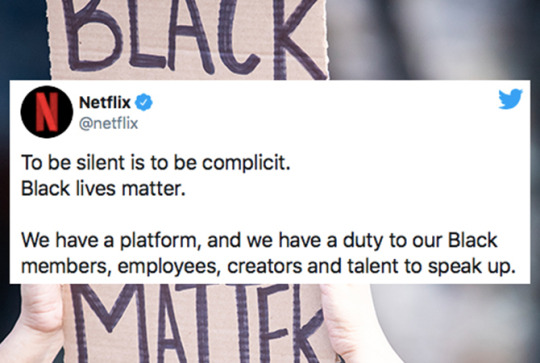
(Image taken from: https://www.buro247.my/lifestyle/technology/tech-social-media-platforms-black-lives-matters.html)
While social media provides us with countless affordances and, in theory, it should be a very positive thing; we exploit these affordances to serve our own selfish needs and desires because of human nature. Social media exploitation leads to problems like scams, fake profiles, harassment, cyberbullying, and grooming. These issues happen daily, and social media companies struggle to combat them.
Ultimately, living in today's community, it is not easy to refrain from participating in online media such as Facebook, Instagram and Snapchat. Everything we do is online or connected to the online world. It would be difficult to measure the affordances that platforms like social media have provided us without addressing the constraints that also come with them.
References:
Comunello, F., Mulargia, S. and Parisi, L. (2016) 'The 'Proper' Way to Spread Ideas through Social Media: Exploring the Affordances and Constraints of Different Social Media Platforms as Perceived by Italian Activists', The Sociological Review, 64(3), pp. 515–532. doi: 10.1111/1467-954X.12378
Jones, R.H. and Hafner, C.A., 2012. Understanding digital literacies: A practical introduction. Routledge.
Khamis, S. et al. (2017) Self-branding, 'micro-celebrity and the rise of Social Media Influencers. Celebrity studies. [Online] 8 (2), 191–208.
Hague, Molly Mae. "Login • Instagram." Www.instagram.com, 30 July, 2020, www.instagram.com/p/CDRuJOGliEK/. Accessed 14 Mar. 2021.
Tan, Ronn. "How Netflix, Instagram, and Other Tech and Social Media Platforms Are Responding to the #BLM Movement." BURO., 3 June, 2020, www.buro247.my/lifestyle/technology/tech-social-media-platforms-black-lives-matters.html. Accessed 13 Mar. 2021.
#social media#community#society#facebook#instagram#tumblr#snapchat#blm#blmisnotatrend#influencer#loveisland#reality#promotion#companies#media#entertainment#fan#fanbase
1 note
·
View note